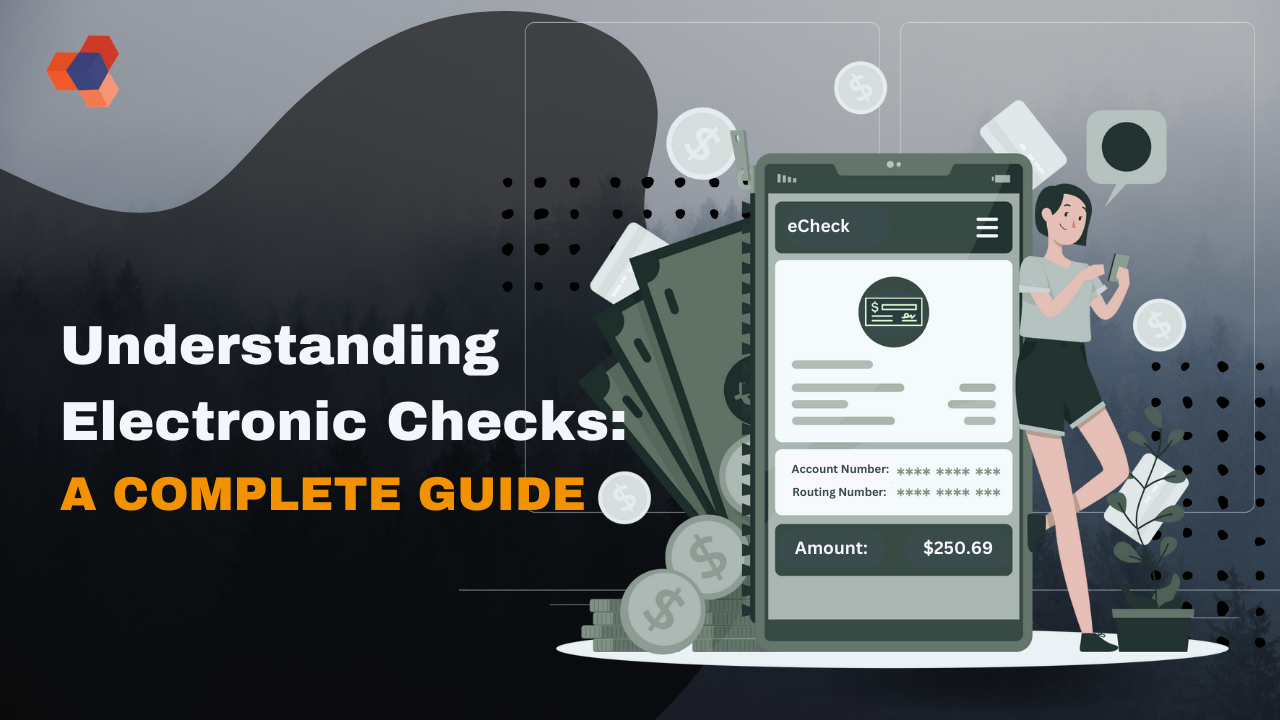
| July 20th, 2023 |
A Complete Guide to Understanding – How an Electronic Checks System Works!
The way we manage money has changed substantially in the digital era. The eCheck payment method, often known as an electronic check, is one of the most noteworthy innovations. The way that businesses and people handle payments has been revolutionized by this technology, which provides a practical, secure, and effective substitute for conventional paper checks. This manual will explain the nuances of the electronic checks system in detail, assisting you in comprehending how it functions and its advantages.
What is an eCheck Payment?
A digital payment method known as an eCheck, or electronic check, enables money to be electronically taken out of the payer’s checking account, sent via the ACH (Automated Clearing House) network, and deposited into the payee’s checking account. Utilizing contemporary technology, this digital payment technique is an advancement over conventional cheque payments and offers a more effective and secure payment processing option.
How Does an eCheck Payment Work?
The eCheck payment process involves several steps:
1. Ask for authorization: The payee must first ask the payer for authorization. A signed order form, a recorded phone call, or an online payment form can all be used to do this.
2. Payment Setup: After receiving authorization, the payee enters the payment details into the software used for accepting online payments. The payer’s bank account number, routing number, payment amount, and payment date are all included.
3. Complete and submit: After the payment information is verified, the transaction is handed off for handling. Once the cheque is deposited, the program gets in touch with the ACH network to start the money transfer.
4. Confirmation and Deposit: The money is electronically sent from the payer’s bank account to the payee’s bank account via the ACH network. Normally, the complete procedure takes 3-5 business days.
The Role of Merchant Services and Merchant Accounts:
The eCheck payment procedure depends heavily on merchant services. These are financial services that let businesses accept eChecks and other forms of electronic payment. A merchant account is a sort of bank account that enables companies to take payments in a variety of methods, most frequently eChecks and debit or credit cards.
A company has to have a merchant account with a bank or another financial institution in order to accept eCheck payments. The eCheck payment procedure is made possible by the merchant services provider, who also ensures the safe transfer of funds from the payer’s account to the merchant’s account.
eCheck payments have a number of advantages over conventional payment systems, including the following:
1. Economical: Because eChecks frequently have cheaper processing costs than credit and debit card transactions, they are an economical choice for businesses.
2. Security: To secure sensitive information and lower the risk of fraud, eChecks employ encryption and other security measures.
3. Convenience: Because eChecks may be processed anytime, anyplace, they are a practical choice for both consumers and companies.
In conclusion, the eCheck payment system is proof of the financial industry’s ability to benefit from digital change. Businesses may take use advantage of this electronic checks system to speed payment processing, increase security, and raise customer satisfaction by knowing how it functions. It seems obvious that eCheck payments and other digital payment methods will play an increasingly significant part in our financial transactions as we continue to progress toward a more digital society.